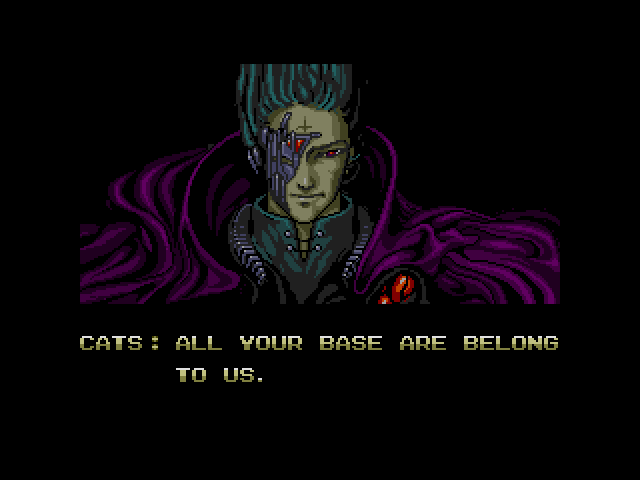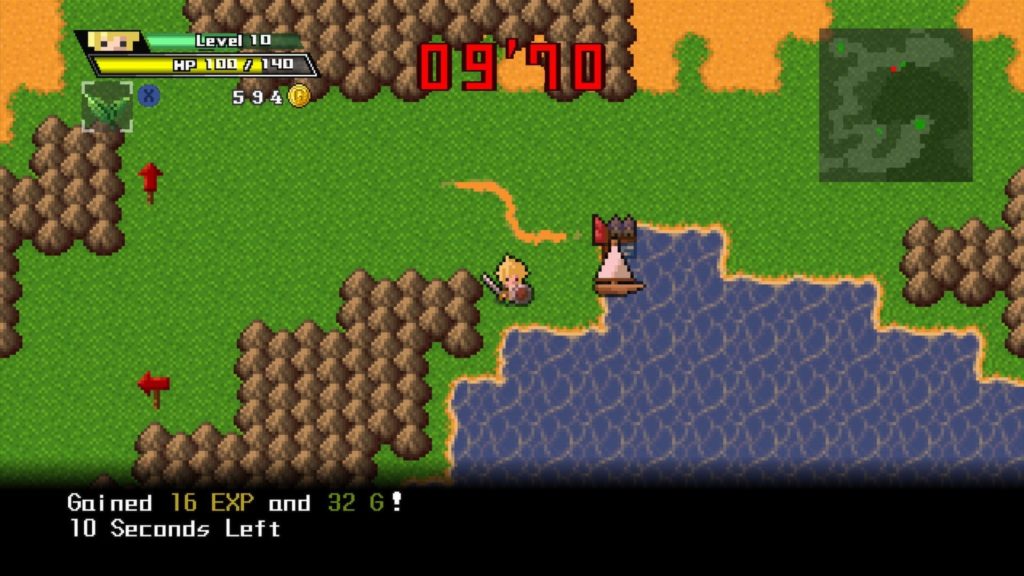Video game localization has come a long way from its rocky beginnings where amateur translators localized games (giving birth to iconic phrases such as “All your base are belong to us” from Zero Wing), to specialized teams working entire months on the translation of one single video game. But, how does video game localization vary from other type of translation projects?


(Zero Wing Screen Capture)
Localization refers to the action of translating a text, audio or file into another language using local phrases and expressions that would be understood by the intended community. However, when talking about games, we must deal with certain problems before even trying to localize.
Less is More
One of the most challenging problems a translator can face when localizing a game is the space constraint. Generally, the GUI (Graphical User Interface) will have certain limitations of space that you will have to consider when translating. For instance, the Japanese game Half-minute Hero had the problem of limiting translation to the number of characters used in Japanese. So, when the Japanese had “魔王より強くなった!” (which means “You are now stronger than the evil lord!”) the translator, Jessica Chavez, had to find a way to convey that meaning in 10 characters or less. Would you like to try finding an English equivalent with this space constraint?
This limitation existed as well in other Japanese games such as the first Final Fantasy, where the enemy names could have a maximum of eight characters. In the game, two of the enemies were “Crazy Horse” and “Centipede” and due to that limitation, they were translated as “MADPONY” and “PEDE”.
That’s why a good number of times when translating a game, a translator goes for the shortest route. Either in menus, in-game conversations or character names, space takes precedence over accuracy. As a video game translator, one needs to be in contact with the developers so that they can tell you about the space constraints, and testing will always be necessary.
And that Japanese phrase from Half-Minute Hero? It was translated to “YOU > EVIL”.
(Half-Minute Hero screen capture)
The absent context
Another common challenge in video game localization is the context or lack of. Recently, while I participated in the translation of a game called House Party, I came across this simple text:
“You should just leave those off.”
I was baffled. The previous line in the code was “Speaking of cats, there’s definitely not one in here.” and the next was “Are you sure about this?”, how would I translate it without any more context? What was “those” referring to?
When performing video game localization, sooner or later one will face a similar problem where you understand perfectly what you need to translate and yet you can’t translate it. In my case I didn’t know the gender of “those” which left me with two options:
“Deberías dejarte esos así.” | “Deberías dejarte esas así.”
One single letter that would be like changing “his” to “her” in a sentence such as “this is his jacket”. I read and re-read the lines of code around the phrase and I just couldn’t find what that line was about.
A tip that I would give to anyone who wants to participate in video game localization would be to require continuous access to the developers. It’s a crucial step that one may skip if you’ve never done this kind of job before. Just as with the space constraint, the absence of context will pose challenges that will require help from the developers’ team. A simple phrase like “Bring it” might prove untranslatable in a lot of languages without the proper context (take for instance, the “I” vs “me” problem in Japanese localization, and phrases such as “Rzr Chr”, “Full Kbd”, and “Blade Kbd” (which I found while localizing the game Coffee Crisis) will just be plain impossible without the helping hand of the game creators.
And this applies to the inverse, too. If a video game developer hires someone to localize a game, a huge red flag would be radio silence on the translator’s part. If he or she doesn’t ask for clarification related to space constraints or context, then he or she is probably doing a bit of a bad work. The best candidate will be that who asks questions even before starting the job.
In this same context, someone who is open to discuss what should and shouldn’t be translated (Character names, places, magical attacks, etc) will generally be a better candidate. Communication, again, is key in game localization.
These are just some examples on how video game localization differs from other translation projects. The video games industry has become one of the most important industries around the world, surpassing even Hollywood in yearly income in recent years. Along with it, video game localization has been gaining importance, making the knowledge on how it operates a necessity for any translator. I hope this gives you an insight in video game localization and encourages you to participate on it.






Comments are closed here.